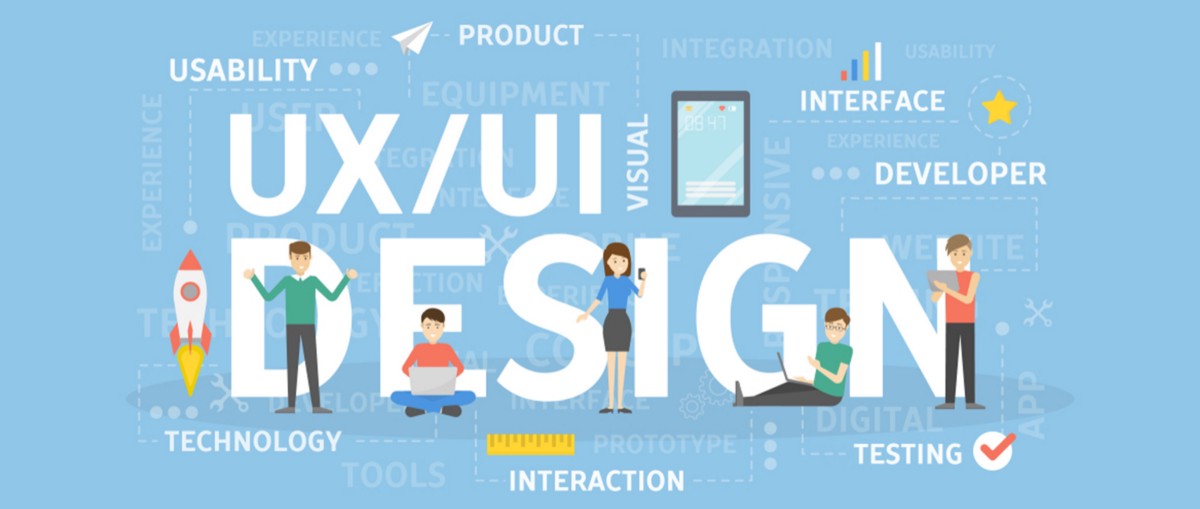
The plethora of skills involved in UX and UI design.
In my first story ‘User Experience is …’ I promised that …
"over the course of a few stories, I’ll try and cover a few of the sciences we draw upon in our art as a creative community to create engaging experiences."
Starting a new year, it’s good to look back and pen this. A little longer than my other stories, but hopefully helpful to understand the UX field. It might be the story that holds the series together and give the other stories something to hang off, by looking at:

The plethora of skills involved in UX and UI design.
Many of the challenges throughout last year, misunderstanding has been the core. I educate as I go, to develop certainty and so everyone has the same understanding as the rest of the team. But sometimes misunderstanding comes from the lack of exactly what UX is, which has presented a false start in building relationships. Many think UX is just design dust that can be sprinkled last minute to make everyone like something. Sound familiar? (you’re not alone!)
When working with new people, I’ll check-in to see if people have worked with UX, or even design before. If they have, I’ll check to see if they understand what support and value UX is able to add.
To first understand UX, I’ll explain the abbreviation.
“ User experience ”, is how a user feels when they use a specific product or service. It encompasses a variety of feelings including emotion, senses, and physical interaction.
Coined by Donald Norman, Apple’s former vice president, who also said:
“I invented the term because I thought human interface and usability were too narrow. I wanted to cover all aspects of the person’s experience with the system including industrial design, graphics, the interface, the physical interaction, and the manual.”
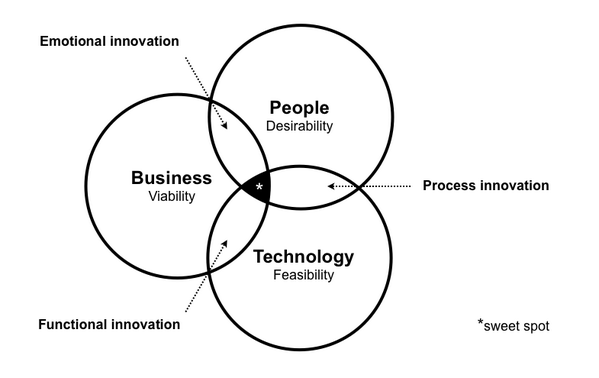
Sweet spot of human centred design, IDEO.
Not solely focussed on graphic design, UX focusses on human centred design:
UX is fundamental to the product value chain, ensuring at each stage that the requirements and the solution will provide benefits for the business and users and acts as a point of continuity at each input and output stage.

Ryan Singer, The Place of UX.
What UX design actually looks like is different between:
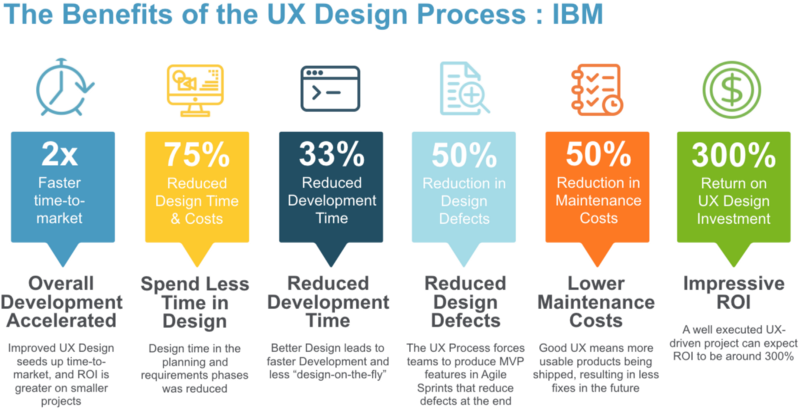
Return on Investment of UX, IBM.
Good UX design creates a positive experience for users by understanding and fulfilling their needs. It provides a functional service to make the user’s life easier, so the user wants to use the product or service as it saves them time, effort or money.
But more than just the functionality, it makes the user feels positive when using the product or service. Either because it makes them feel good, or it makes other people feel good, through it being:
All successful products or services have UX at their heart and have one or more of these traits to become and remain important to the user. It’s something that they feel a strong affinity with. Strong enough to want to stay loyal to it and/or it’s brand and for it to be with them all day and everyday. It’s so good that it sticks with them above the other casual interactions with other products and services. They continue to be satisfied either in the same way or different ways and it becomes a partner of their life.
Without good UX though the opposite it true. In the worse cases the user sees no value or benefit to the product or service either due to limited functionality or by providing functionality that is so difficult to use they find an easier way of doing the same task or they find a work around that doesn’t involve the product or service.
At best, poor UX might lead to a casual relationship with the user, based around the transactional element of the product and service, with transient usage. The link to these users will be so weak that other products and services risk winning them over and them moving away.
“Most people make the mistake of thinking design is what it looks like. People think it’s this veneer; that the designers are handed this box and told, ‘Make it look good!’ That’s not what we think design is. It’s not just what it looks like and feels like. Design is how it works.”

Interaction Design Foundation, What is Experience (UX) Design?
Design is very broad; from aeronautical all the way through to workspace, passing by the likes of accessibility, automotive, airport, commercial, customer, digital, experience, fashion, graphic, industrial, infrastructure, interior, interaction, manufacturing, office, product, retail, service, transportation, usability and workspace design, to name just a few!
Generally, both terms are used interchangeably. UX and UI go together to form coherent and beautiful experiences. But, UI stands for ‘User Interface’ and UX is ‘User Experience’. Most notably they have distinct processes for their implementations.
“User Experience is a journey and User Interface is the destination for the journey.”
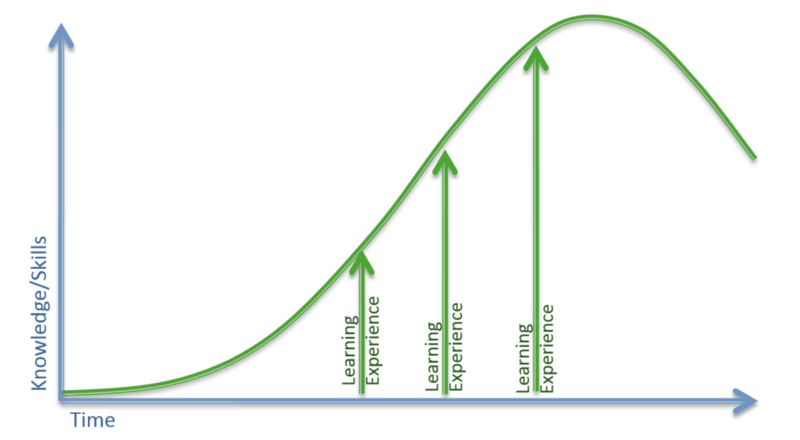
UX is all about flattening out the learning curve or reducing it to a small hump
UX is everything the user experiences in the product. Designing doesn’t mean just making things look good, but providing an elegant solution to a problem. It’s enabling users to achieve what they want to, quickly, easily (but also anticipating what else the user my want to do from there or next) and hopefully with some enjoyment.
UX is a user centric design process, so that we understand thought processes and wants, while understanding where users are and what else is going on in their lives. This means we’re able to design something that is easy to use and they quickly understand the flow of the application.
Often we work to make sure no learning is needed, making it second nature and intuitive. However if a learning curve is necessary, we will work to make sure that it is a shallow as possible, so that everyone can quickly understand and remember.
In complex systems (think air traffic control and healthcare) where the learning curve might be slightly higher than normal, we will support and guide the users through the learning curve, without the need to step away from the task that is needed to be done.
“more about making sure what’s under the hood works well"
UX is more about making sure what’s under the hood works well and less about how something looks or feels. It’s understanding the flow and steps along the way. It’s working around admin, hoops and red tape, to make sure the organisation or machines take most of this burden and it isn’t passed onto the user. We work to reduce input/info from users, using the easiest, most available format, to make this less strenuous and laborious. For example taking a photo of card details instead of typing them in.
‘Making sure what’s under the hood works well’, extends to making sure the product is reliable and also that it is performant. So it works all the time, every time and it’s quick to use. Because who wants to change queuing in a local government office for waiting for a spinny wheel on a mobile!
Designers can be involved in conversations that use ‘we / I think …’ or ‘it might be better if …’ However the strength of good UX is having domain level knowledge, working understanding of the product and having clear rationale about design decisions that are backed up by tested facts, not opinions or assumptions.
Yes, User Experience is based on User Research, which involves building empathy for your users to share with the product team, competitor analysis, prototyping, testing, iteration and validation. It also deals with the analysis of all of these sources and building these into stories, so that other team members can understand and clearly see the correlation of what’s being built with either research, feedback or validation.
Moving past build, UX is also involved in the tracking of goals within products to optimise business performance and user ease in using the product. As the more we know about how people are using a digital product the more we can refine the product. This is such a key part of UX design that I’ve written how User Experience is … User Research
User Experience is … User Research
Key points in UX designing:
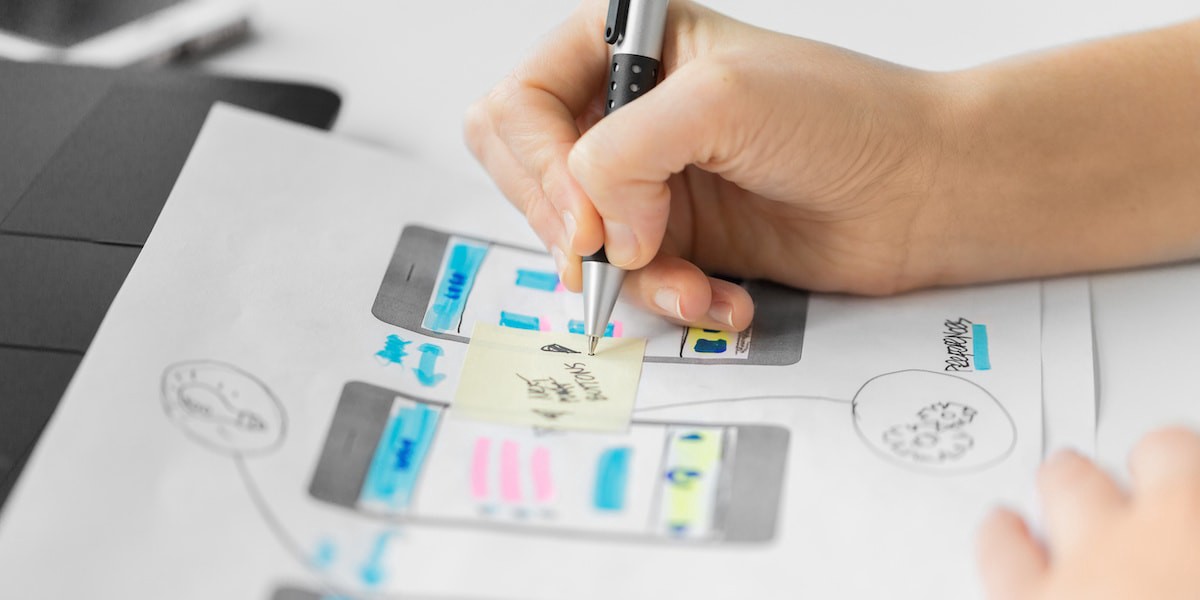
‘UI is like a joke, if you have to explain it, it’s not that good!’
From when you wake up to when you go back to sleep, you interface with hundreds of things: a tap, a doorknob, a Cafetière, the knobs on an oven / hob, the buttons on a shirt, the zipper on a coat, the key in a lock. Even these simple physical forms require an intentional interface design, so you understand how to use them.
UI is basically the form of a product. Good UI design should mean the product is intuitive to use without a manual, just like in the examples above. By understanding the user’s biases, behaviour, interpretation, intuition, visual perception and understanding, clear design patterns can be developed. If done well, they create an attentive, nuanced, and user-centered interface ultimately becoming universal design patterns, like in the examples given.
UI also includes the aesthetics, the look, feel, responsiveness and interactivity of a product. Focusing on anthropometrics, ergonomics and haptics, to define the layout, interactions, transitions, animation, and even single micro-interactions.
Key points in UI Designing:
“ I strive for two things in design: Simplicity and Clarity, Great Design is born of those two things ”
Lindon Leader, creator of the FedEx arrow logo
The term ‘UX Designer’ is sometimes used to replace ‘digital’ designer for no other reason than it’s the latest buzz word. So fundamentally means different things to different people. However hopefully this story helps develop the understanding of what UX is the difference between UI.
No matter what comes before the word ‘designer’, all designers are creative problem solvers, possibly with different specialisms or interests, but we’re all working to make the world better and make a useful and successful product. To do this we have to use a user centric process in order to achieve this.
All products start with an assumption. For every assumption there’s an insight. For every insight there’s a hypothesis. For every hypothesis there’s a test. For every test there’s an outcome. For every outcome there’s a data point. For every data point there’s analysis. And for every analysis we create a story by which users are guided through product experiences. The job of any designer is to utilise their range of skills to create and iterate on those experiences and interactions through research and design.
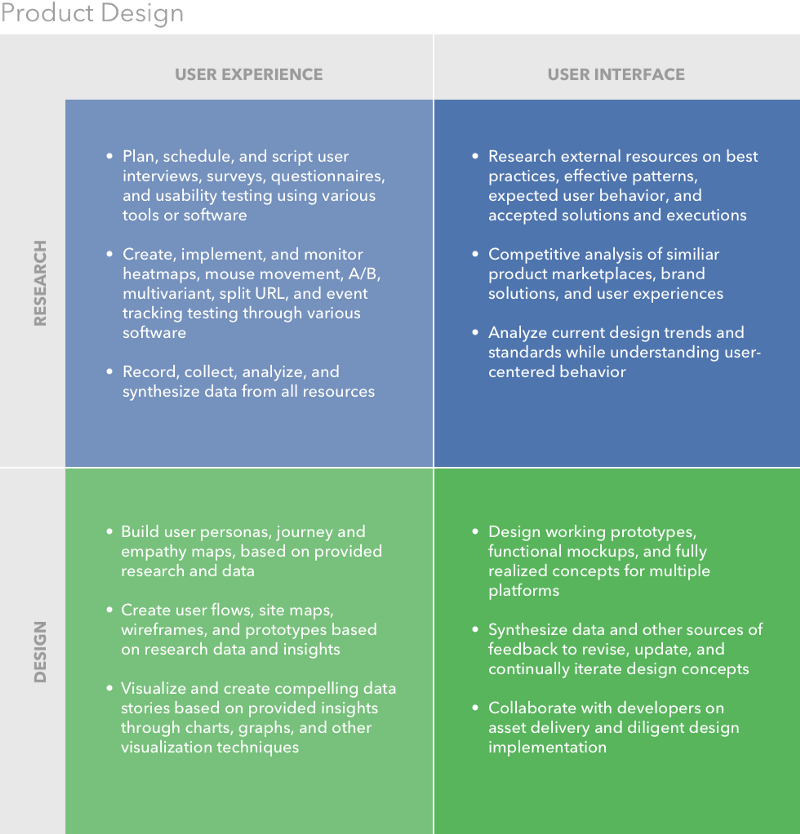
Product design matrix, showing differnt roles, skills and techniques
With those thoughts in my head, I’m going to look at how design is able to start helping out those big colleague areas and start to lead delivery with experience considerations, instead of timescales and deadlines, by looking at how User Experience is ... Lean Roadmapping and how that mindset can start breaking down things into valuable smaller bitesize improvements to the colleague experience.
Originally written as part of the ‘User Experience is …’ series for UX Collective.